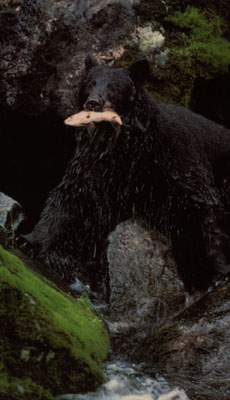 Ecological Justice is everyone's occupation.
Ecological Justice is everyone's occupation.
How does analyzing media refer to a class focusing on ecojustice?
"we face a rapid dissolution of the assumptions of an education organized around the slow moving printed word, and the equally rapid emergence of of a new education based on the speed-of-light electronic image."
p. 145.
define | argument | background | effects | evidence | text | journal | what is serious? | TVs impact | symbolic environs | ends
Focus: The assault of media on education and the eclipse of action by disinformation.
Media matters in ecological problem solving.
How? The role of OSIL -- the Office of Student Involvement & Leadership
When do we do something and what is there to address?
Where are eco-justice problems acute or chronic?
for example: Why is this blog so concerned?
Your letters on a range of concerns.
Where are we?
Defining the five facets of excellent discourse or communication.
Discussing the limitations of exposition --print and writing-- in an Age of Show Business, commercialism and audience fragmentation.
Seeing how commercialization, commodities, the information to action ratio concept and audience fragmentation all promote poor communication on even serious matters.
What are we focusing on media revolutions for?
Our audience is a mix of visual, audio, expository and poly-graphical learners.
What about our audience and the narcosis of modern media?
How do arguments over discourse & the power of Images relate to ecojustice?
"Changes in the symbolic environment are like changes in the natural environment."
Where are we headed?
To comprehend how images affect our capacity for action so that when we use media we effectively convey the complexity of serious matters.
p. 105.
Our literate culture--that is the ability of people to read written documents, books, plays, scripts or edicts--was given a tremendous blow by audio and visual broadcasting.
That is to say that the widespread ability of people to read, and the spread of significant ideas is now a very competitive arena among print, radio, cable, televised and internet based media. So to convey concepts and social, political, economic or ecological ideas is hampered -- not fostered or promoted-- by effective discourse.
• The poly-graphic mind, then; is an expression of the transformation of communication by the invention, spread and acceptance of electronic and digital media.
Postman asserts that we have changed without being even aware of that change.
"its audience does not regard the slogan as a conception of a disordered mind." p. 112
He uses an analogy: of a river and media.
pp. 27-28.
I find it useful to think of the situation this way: Changes in the symbolic environment are like changes in the natural environment: they are both gradual and additive at first, and then, all at once, a critical mass is achieved; as the physicists say.
A river that has slowly been polluted suddenly becomes (p.27) toxic.; most o of the fish perish; swimming becomes a danger to health. But even then the river may look the same and one may still take a boat ride on it.
In other words, even when life has been taken from it, the river does not disappear, nor do all of its uses, but its value has been seriously diminished and its degraded condition will have harmful effects throughout the landscape.
p. 28.
"It is this way with our symbolic environment."
"We have reached a critical mass..."
"electronic media have decisively and irreversibly changed the character of our symbolic environment."
Huxley's "technological narcotics" principle.
"the slogan as the conception of a disordered mind."
So the possibility of anyone's knowing about the world, as against merely knowing of it, is effectively blocked "
p. 112-113.
" I should say that embedded in the surrealistic frame of a television news show is a theory of anticommunication, featuring a form of discourse that abandons logic, reason, sequence, and rules of contradiction."
"That bite-sized is best, that complexity must be avoided, that nuances are dispensable, that qualifications impede the simple message, that visual stimulation is a substitute for thought."
Robert MacNeil, past executive producer and anchor of the News Hour on PBS.
Robert MacNeil's words as evidence "keep everything brief, so as not to strain the attention of anyone bit instead to provide constant stimulation, through variety, novelty, action, and movement."
You are required …to pay attention to no concept, no character, and no problem for more than a few seconds at a time."
p. 105.
Our "sources of news" use "Facts as a source of amusement"
p. 113.
A wide range of deep concerns:
- Habitat for Humanity
- Sierra Club
- Educators
- Marine Environment
- EPA
- Screenwriters and authors
- past Vice-Presidents and Nobel Prize winners
- CEOs of non-profit organizations
- Research specialists
- advocates for social awareness
- my case of extending the river analog
FAST FACT
The U.S. Congress established the Pacific Coastal Salmon Recovery Fund to contribute to the restoration and conservation of Pacific salmon and their habitats.
Spawning & Migration of Pacific Salmon (Salmonidae) imperiled

The upriver salmon migration is one of nature’s most exciting dramas. But to the five species of Pacific salmon (chinook, chum, coho, pink, and sockeye), it is a long, strenuous, desperate race against time, with every obstacle taking its toll.
Pacific salmon hatch and live the first part of their lives in fresh water, then migrate to the ocean to spend their adult lives, which may be as short as 6 months or as long as 7 years. When they reach sexual maturity, they return to the freshwater stream of their origin to lay their eggs–making the round trip only once.
Salmon spawn in virtually all types of freshwater habitat, from intertidal areas to high mountain streams. Pacific salmon may swim hundreds, even thousands, of miles to get back to the stream where they hatched.
Only a small percentage of salmon live to reach their natal stream or spawning grounds. Since salmon do not feed once they leave the ocean, some will die on the way because they lack enough stored body fat to make the trip. Many will be caught in fishermen’s nets or swim through polluted waters near cities. Many must make their way over power dams, leaping up from one tiny pool to the next along cement stair step cascades. In the tributary streams, waterfalls and rapids are steep and swift enough to eliminate all but the strongest. Otters, eagles, and bears stalk the salmon in shallow riffles. Once on the spawning grounds, the fish battle each other: females against females for places to nest, males against males for available females.
Threats to Pacific Salmon (Salmonidae)
Many salmon stocks are seriously threatened by what are called the “four H’s”: Habitat destruction, Hydroelectric dams on migratory rivers, over-Harvest of rare stocks, and competition with Hatchery fish. Some stocks are so severely reduced that they have been listed as endangered or threatened species under the Endangered Species Act.
:: Source: U.S. Fish & Wildlife Service
Definitions: communication, from the Latin communicare ‘to share’
media | amusement | evidence | nature | health | ecology | race and justice | seriousness
Serious matters are those that:
- A. affect a wide array of people
- B. have impacted a significant number of people differently
- C. costly in the sense that some expense in terms of
- C1. lives and living situations
- C2. money and debts
- C3. environmental conditions
- C4. food and nutritional health, or
- C5. other living beings
- is being paid by all or some identifiable people.
- D. developmental problems exist for people and institutions
- E. Emerging as a prolonged, recurring or severe matter.
- chronic, such as the status of women and poverty
- acute, such as the devastation of Haiti by storms
- ethnic prejudice, gender insensitivity, racial intolerance.
Other of important terms:
media | amusement | evidence | nature | health | ecology | race and justice
• media, means the use of some effective means to convey messages.
• Amusement: Postman insists that this form of communication crowds out content and meaning from the radio, TV and print media of our time and the medium (media) used to present people with ideas has actually not served the public good.
• Background: SInce 1921 radio and later television have been commercial enterprises that lease frequencies corresponding to band width from the electromagnetic spectrum from the Federal government.
Due this week: a focus on a topic of your choosing for you to investigate to speak about. (See syllabus page 5)
Neil Postman -- Amusing Ourselves to Death:Postman, pp. 64-80. Define discourse, “typographic view,” & epistemology..
- Neil Postman, Amusing Ourselves to Death.
- Susan Sontag,
Regarding the Pain of Others.
This was her last book, published in 2003 before her death in 2004. - Stephen J. Rose.
- Kathleen Parker on what constitutes news in the age of the internet: 8-1-08.
- Let Us Now Praise Famous Men, Walker Evans and James Agee, 1941.
- Overseas, or Foreign Press a sampling.
- USA print media, daily newspapers.

